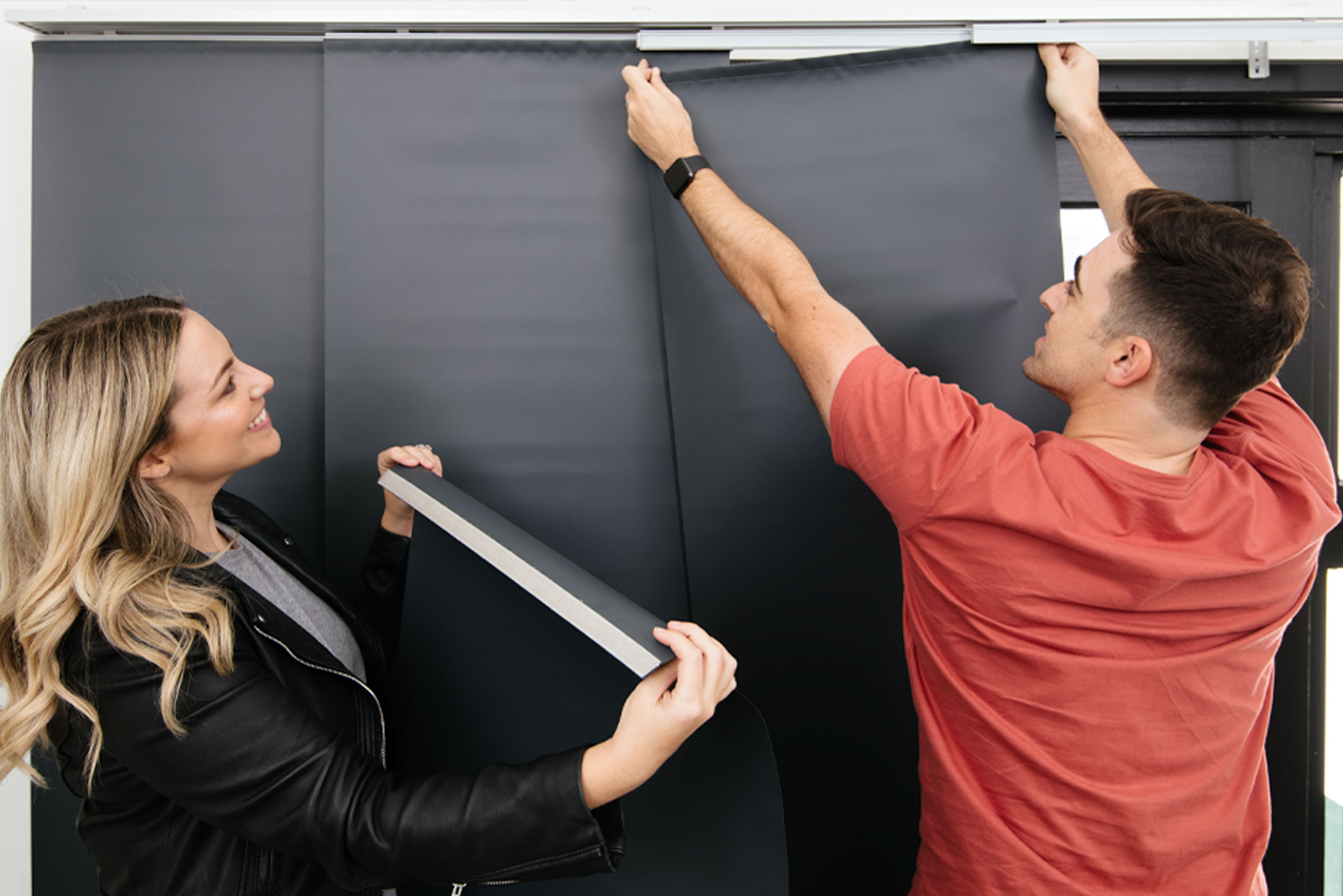Blinds
Smart ways to cover a sliding door
When choosing blinds or curtains for sliding doors, it’s important to consider their primary function
With such a great range of blinds and curtains available, it can be difficult weighing up the pros and cons of the different features. If, for example, you’re fitting blinds in a bathroom, you’ll need to consider moisture, privacy and ventilation. For a bedroom, it’s likely that light and temperature control (plus a relaxing vibe!) should be at the forefront of your thoughts.
If you need to cover a sliding door, you’ll want to keep accessibility top of mind; so key questions to ask yourself are how often do you use the door? Will the blinds or curtains be primarily cosmetic additions, or do they need to block or filter sunlight at different times of day too? These types of factors should influence your choice of window furnishing, but following are a few specific considerations when selecting blinds or curtains for a sliding glass door.
Doors in constant use?
If your sliding door is in regular use, with people frequently entering or leaving via a patio or alfresco area, an elegant set of double curtains may offer a pleasingly practical solution. Sheer curtains can be tied back out of the way while still adding a feeling softness to the space, and if needed, releasing them will instantly provide daytime privacy. Blockout curtains can also be tied back and then drawn closed at night, ensuring complete privacy while still allowing access.
However, if the door leads directly to an area where natural elements could easily be transferred into the home, then it pays to be mindful of the wear and tear the curtains could experience. While most curtain fabrics can be spot cleaned and many can be washed, constantly removing dirt or marks will become a pretty tiresome task over a period of time.
Another great solution for sliding doors are the Aussie classic vertical blinds or panel glide blinds. These provide exceptional light and privacy control, day or night, while being super easy to draw out of the way when door access is required. Just be sure to choose a stacking side that will have the least impact on daily door use, ideally one that draws the panels away from the door completely. One last thing to note is the more contemporary looking wide slat of a panel glide blind has become an increasingly popular option for bigger open plan spaces where a row of glass panes and a sliding door are found together.
Less trafficked doors
If your door is more of a window and rarely used as an access point, then the choice is really all yours!
Sheer curtains, Venetian blinds or roller blinds can all work well, however, roller blinds are a particularly good option to help filter the exact amount of sunlight you want to let into the room thanks to the available sunscreen or light-filtering fabric options. They are also really convenient for sliding glass doors, where it can be difficult to block out some of the sun’s rays when it’s higher in the sky.
Roller blinds can also be quickly rolled up by hand (or motor) whenever access through the door is required. We typically advise choosing a face fit and forward roll for sliding door rollers as this will ensure the fabric clears any handles or other elements that may protrude inwards from the glass or surrounding frame.
Need some extra advice or inspiration? Contact us and we’d be happy to help.
